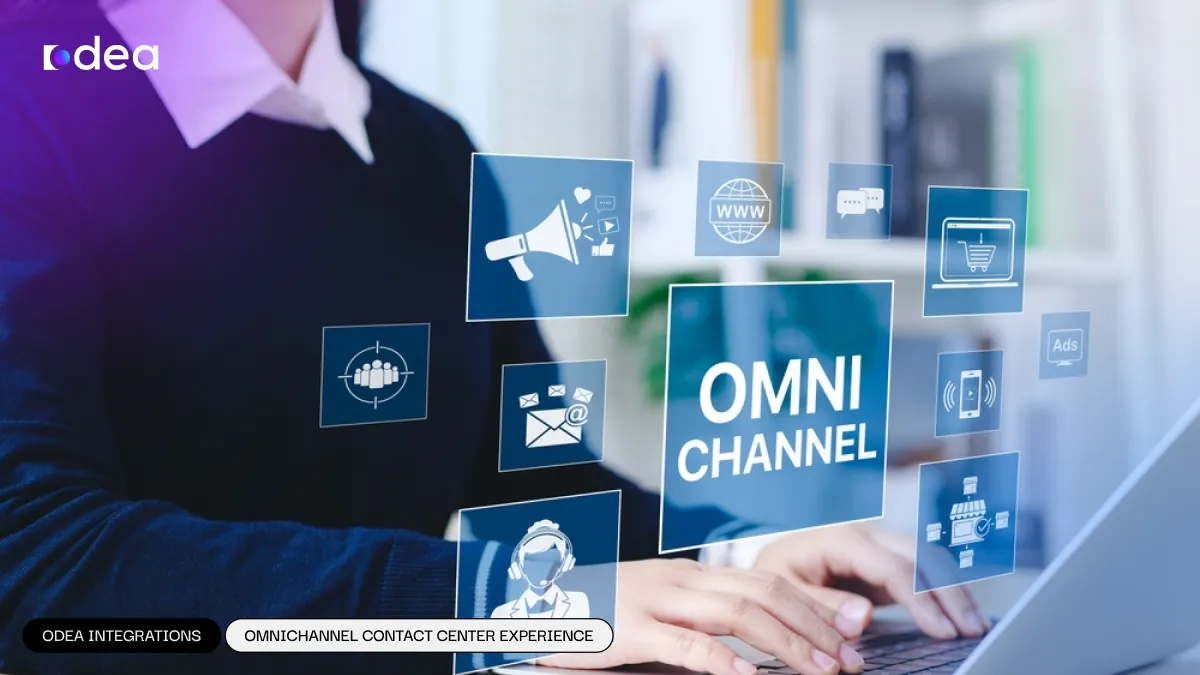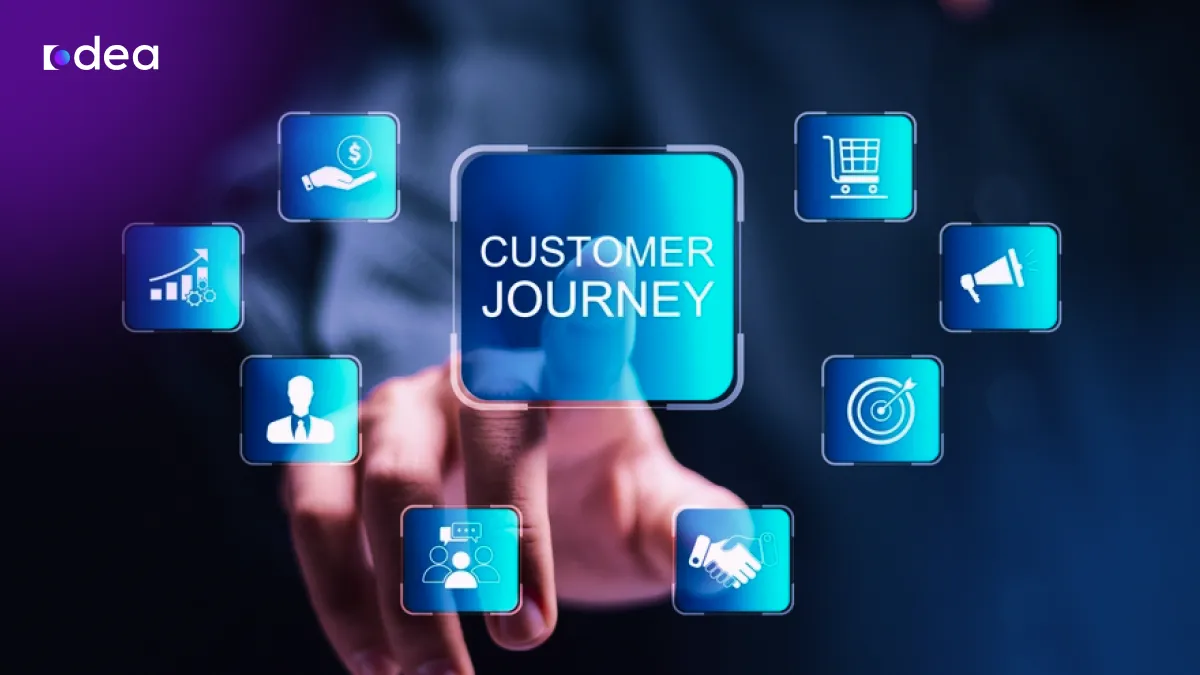Omnichannel contact center solutions are no longer a futuristic concept—they’ve become the new standard for delivering exceptional customer engagement. Today, customers expect seamless, consistent experiences right from their initial interaction, whether it’s through live chat, email, phone, or social media.
The reality? Businesses are quickly adapting to meet this demand, leveraging innovative technologies like cloud CX platforms and integrated omnichannel tools. These solutions break down communication silos, offering a unified experience that customers now expect.
As businesses strive to stay competitive in an increasingly digital-first world, mastering omnichannel customer service is no longer optional.
This article will dive into the key components of a seamless omnichannel contact center experience.
We’ll explore how businesses are utilizing these solutions to bridge service gaps, foster stronger customer relationships, and ultimately gain a competitive edge in the market. Get ready to discover what it truly takes to evolve from a multichannel approach to a fully integrated omnichannel strategy.
The Problem: Fragmented Communication and Customer Frustration
Have you ever contacted a company on social media, followed up with an email, and then had to explain your issue all over again when you finally called? Sadly, this is the reality for many customers today, especially in multichannel service systems—and it’s a headache for businesses too. So, what’s the problem? While the world has gone digital, many contact centers still operate in silos.
In a traditional multichannel system, each communication channel—whether it’s voice, live chat, email, or messaging—functions independently.
This lack of integration means customer service agents don’t have a complete view of the customer’s history or preferences, which can result in a disjointed experience.
As a result, customers often need to repeat themselves when switching between channels, leading to frustration and a fragmented experience.
This lack of cohesion not only damages customer trust but also increases the likelihood of losing customers. And with the ease of switching to another brand, this is a problem business can’t afford to ignore.
Today’s customers expect smoother, integrated interactions. They don’t want to have to worry about which department is handling their case or repeat their story each time they switch channels.
What they want is quick, efficient service, regardless of how they choose to communicate. That’s where omnichannel contact center solutions come in.
By integrating all communication channels into a unified system, omnichannel platforms offer a smooth experience that reduces frustration and keeps customers coming back. With this approach, businesses can provide a consistent service across all touchpoints, making it easier for customers to get answers and resolve issues without unnecessary delays or repetition.

Why Omnichannel Contact Center Solutions Matter
Let’s get one thing clear: omnichannel is not just about being available on every communication channel. It’s about ensuring that these channels work together seamlessly. And that’s where the real transformation happens for businesses.
With omnichannel customer service platforms, businesses can connect all communication channels—whether digital or traditional—into one integrated system.
This allows customer service agents to pick up conversations exactly where they left off, regardless of the channel the customer used to reach out. It’s not just about convenience; it’s about creating a more efficient workflow that enhances every customer interaction.
So why is this important now more than ever? Because customer expectations have never been higher.
Consumers today expect to have a unified experience no matter which channel they use. If businesses fail to deliver that, they risk losing customer loyalty.
To explore more about the benefits and features of omnichannel contact center solutions, check out our detailed article on Building a Seamless Omnichannel Contact Center Experience.

Data shows:
- According to the Aberdeen Group, companies with a strong omnichannel strategy report an impressive 89% customer retention rate, compared to just 33% for those with weaker strategies.
This stark contrast underscores the importance of adopting omnichannel contact center solutions.
- Salesforce’s State of the Connected Customer report reveals that 73% of customers expect a seamless experience across multiple channels. This highlights the urgency for businesses to adopt integrated communication tools—or risk being left behind.
Real-World Example:
Consider the example of a global retail brand that decided to implement an omnichannel customer experience platform.
Before the switch, the company struggled with repetitive inquiries, long response times, and fragmented service.
Customers often had to repeat themselves when switching between channels, leading to frustration.
After adopting an omnichannel solution, the company gained full visibility into each customer’s journey, enabling agents to resolve issues faster and more effectively.
The result? Customer satisfaction (CSAT) scores increased by 22% in just six months. This success story illustrates how powerful an omnichannel contact center can be in improving efficiency and building customer loyalty.
For businesses looking to choose the best software for their contact center, explore our article on Top Omnichannel Software Solutions for Contact Centers to find out more about the top tools available in the market today
For businesses like Odea Integration, using omnichannel platforms means providing agents with the tools they need to deliver faster, more personalized service. It’s about ensuring that every interaction—no matter the platform—contributes to a positive experience that strengthens customer relationships.
From Multichannel to Omnichannel: Key Differences
While “multichannel” and “omnichannel” are often used interchangeably, they’re not the same. Let’s take a look at the differences between the two:
| Feature | Multichannel | Omnichannel |
| Channels | Multiple, separate | Multiple, fully integrated |
| Agent View | Channel-specific | Unified customer profile |
| Customer Experience | Fragmented | Seamless and consistent |
| Continuity | Low | High |
Multichannel communication offers customers various ways to reach out to a business, but it doesn’t connect those channels in any meaningful way. Omnichannel, on the other hand, ensures that all channels are integrated into one seamless system.
This means customers experience a continuous, cohesive journey, with no need to repeat themselves.
With omnichannel contact center solutions, businesses can create a smoother service experience where every interaction—whether it’s chat, email, social media, or phone—feels connected. This consistency builds trust and loyalty, and customers are more likely to return.
How Odea Integration Helps You Achieve Omnichannel Excellence
At Odea Integration, we understand that the transition from traditional multichannel systems to a seamless omnichannel experience is more than just a technology upgrade—it’s a shift in how you engage with customers.
Our solutions are designed to empower your business by integrating every touchpoint into a unified platform, ensuring that your agents have a 360-degree view of customer interactions, no matter where they occur.
By leveraging advanced cloud CX platforms and real-time data, Odea enables your team to deliver faster, more personalized service. Our omnichannel contact center solutions eliminate silos, making it easier for your business to keep up with the demands of today’s connected customer.
Whether it’s through live chat, email, social media, or phone, Odea ensures that every customer interaction is smooth, consistent, and efficient.
To take your omnichannel customer experience to the next level, explore the Top Omnichannel Software Solutions for Contact Centers and see how you can optimize your contact center operations.
Our mission is to help businesses like yours stay ahead of the curve, delivering experiences that not only meet but exceed customer expectations.
With Odea’s omnichannel solutions, you can provide exceptional service that drives loyalty, boosts customer satisfaction, and ultimately leads to business growth.

Conclusion:
In today’s competitive landscape, customer expectations are evolving rapidly. Consumers demand seamless interactions across multiple channels, and businesses that fail to deliver risk losing loyal customers.
Omnichannel contact center solutions are the key to meeting this demand.
By integrating all communication touchpoints into a single platform, businesses can offer an unparalleled customer experience that is consistent, efficient, and personalized.
This approach not only drives customer satisfaction but also improves operational efficiency and strengthens relationships, ensuring long-term success.
Adopting an omnichannel approach isn’t just a trend—it’s a strategic move that helps businesses stay ahead in an increasingly digital world.
And for companies like Odea Integration, this shift is essential for delivering the exceptional customer service that today’s consumers expect.
Don’t let your business lag behind. Transform your customer experience strategy today.
Dive deeper into our comprehensive guide on Omnichannel Contact Center Solutions or schedule a demo with Odea Integration to see how our solutions can elevate your customer service to the next level.
Let’s create seamless, connected journeys that drive results!





